The SanDisk Extreme Pro has given me a glimpse at what proper USB4 external SSDs like this have in store for us, and it’s enough to make me rather excited. Mainstream usable 40 Gbps USB4 drives are finally here, and they’re fast. This, too, in the same year that SanDisk has shown us the first mainstream, usable PCIe 5.0 internal SSD with the WD Black SN8100. 2025 really does seem to be a year of transition and evolution for PC storage.
Although I couldn’t find an official spec that lists the specific controller inside this SanDisk Extreme Pro external SSD, it must surely be the use of a new controller that allows this drive to finally sustain USB4 speeds, and do so at a decent temperature. The few previous USB4 drives on the market simply weren’t capable of this.
Previous USB4 drive controllers, such as those in the Adata SE920, for instance, couldn’t sustain peak speeds at low temperatures. The SE920 uses active cooling to help things out on this front, but my tests have shown that even then it can’t match this SanDisk in performance and temps (and therefore also in form factor).
Whatever the reason for it, there’s a definite generational improvement in performance on offer here with the SanDisk drive, and I mean both in terms of sequential and RND4k performance, ie, for file transfers and for your system tasks, such as running games from the SSD.
The drive is rated at up to 3,800 MB/s and I found it to maintain transfer speeds just shy of this for pretty much two minutes straight, which means about 450 GB of data transferred in just two minutes. Then (once the pseudo SLC cache runs out) it drops to about 2,000 MB/s for another two minutes, then back up for another two, then rinse and repeat.
The speed that it drops to in these dips, crucially, is the same as, or even slightly higher than premium USB 3.2 Gen 2×2 drives, such as the Samsung T9. USB4 is just that much better, but of course you have to have a USB port that can handle the 40 Gbps spec for it to be worth it. Most new laptops these days come with at least one such port, but it’s worth checking just in case, otherwise you’ll have spent USB4 money only to be capped at USB 3.2 Gen 2×2 speeds.
Admittedly, and as you can see below, to get this consistency you need to enable drive write caching, which can in theory lessen stability and increase risk of data loss. But in practice that shouldn’t be much of a risk, and at any rate it still achieves decent sequential peak frequencies even with the write cache function disabled.
It’s not just file transfers the SanDisk Extreme Pro smashes, either. My CrystalDiskMark testing showed the drive’s RND4k read performance to be 34% better than the other USB4 drive, the SE920, and to offer over twice the performance of the Samsung T9, which is a very premium USB 3.2 Gen 2×2 drive and was previously my go-to for, well, everything. Crucially, this benchmark mimics the hundreds and thousands of tiny read/write actions a drive will go through in more general usage, such as when you’re running applications directly from a given drive.
The reason the USB 3.2 Gen 2 T9 was my go-to ahead of the USB4 SE920 is because the latter is a chonky thing that gets incredibly hot, even with the strange spring-open active fan cooling solution on offer. But there’s none of that nonsense with the SanDisk Extreme Pro; it’s a thin drive that I found to cap out at just 66 °C during my testing.
The Extreme Pro doesn’t have your usual external SSD’s design, though. While it’s certainly thin enough, it’s bigger than most previous-gen drives across the other dimensions. At 140 x 68.7 x 11.9 mm, it’s essentially phone-sized. Don’t believe me? Here it is in my hand.
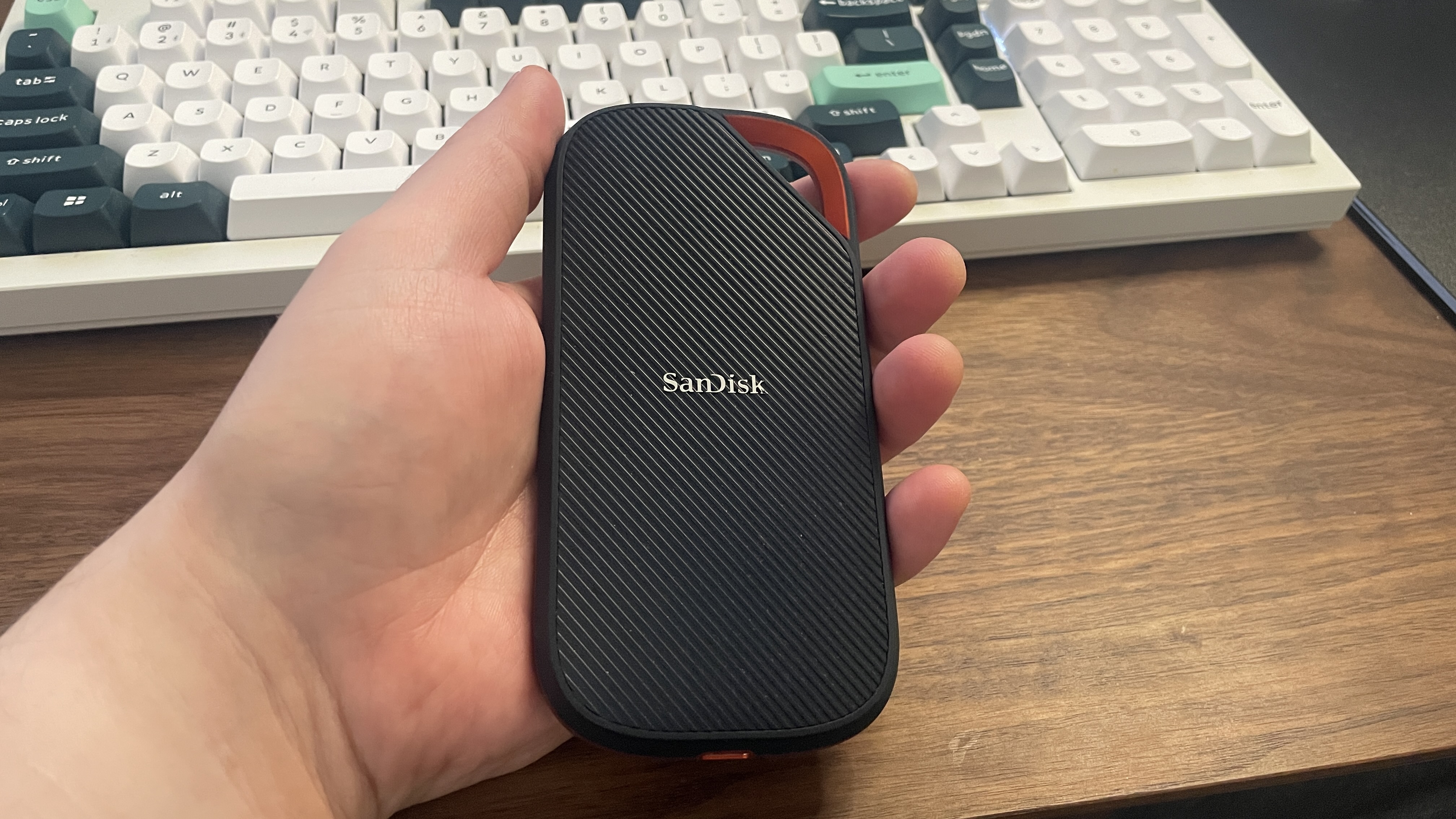
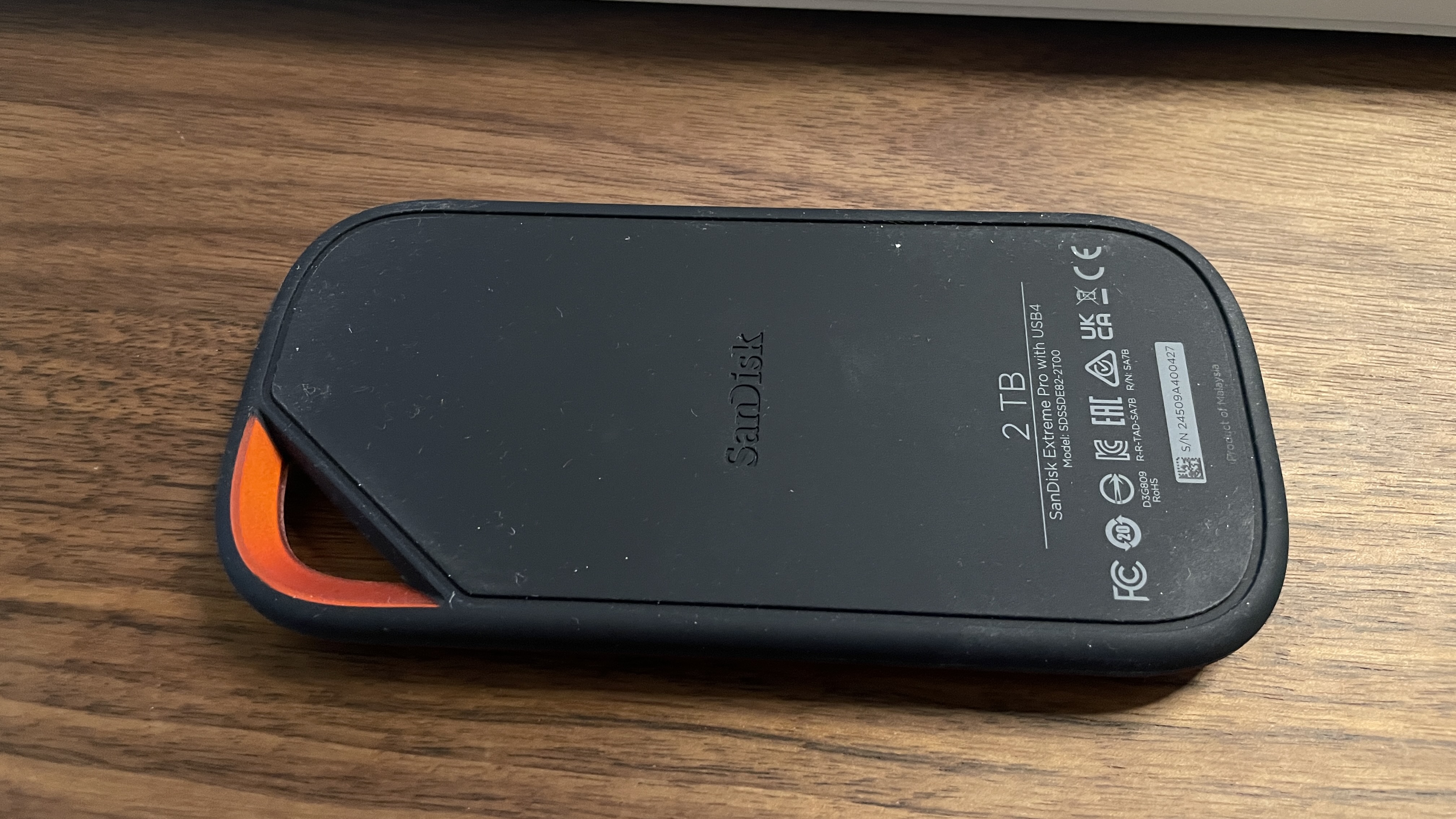
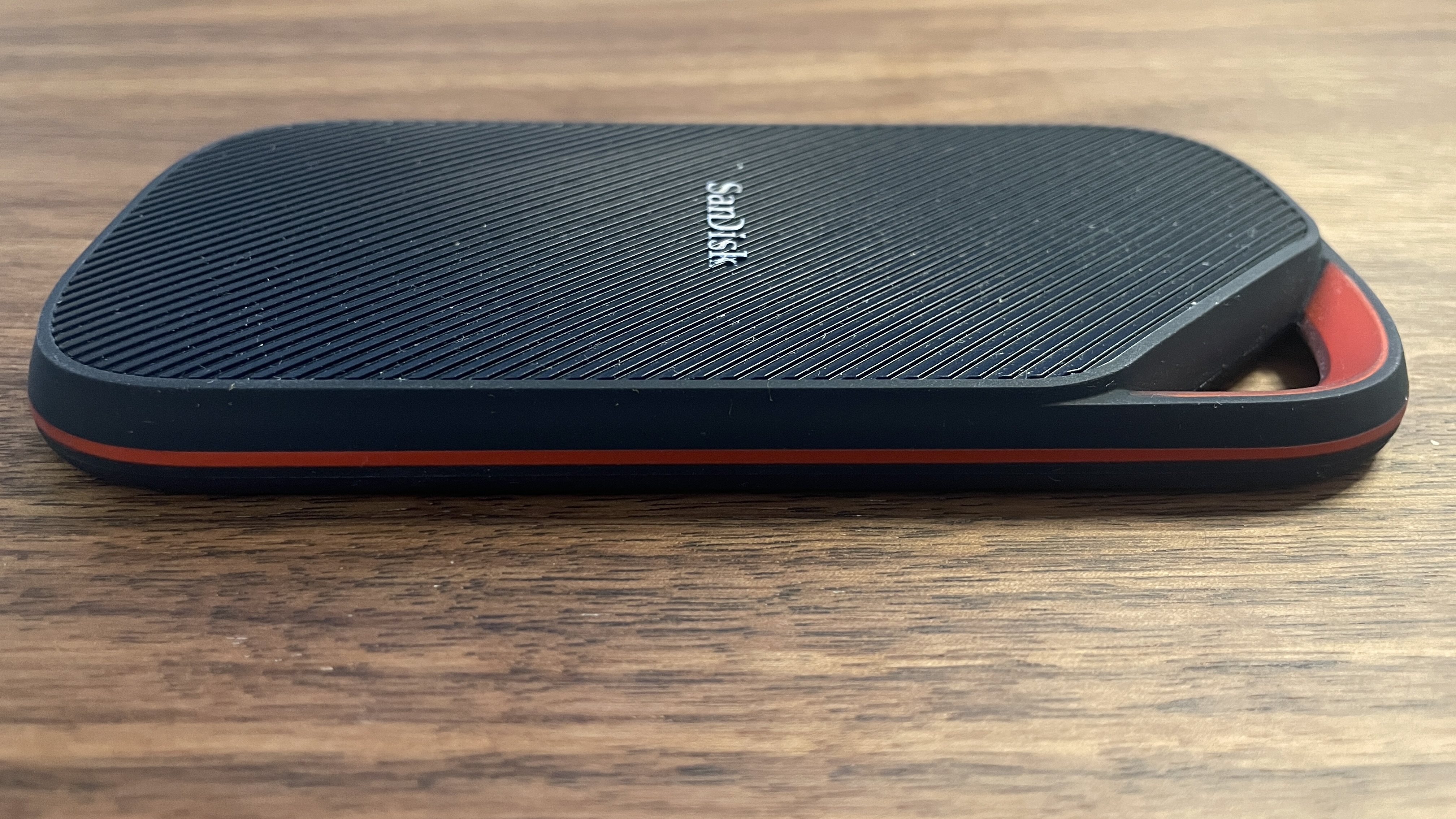
That makes it bigger than the Corsair EX400U, for instance, another new USB4 drive. It also has a hoop, as you can see, which is presumably to keep it hooked or locked, but I didn’t find use for that. It’s certainly not for use on a keychain, given how big it is.
Its textured top feels nice to hold, as does the entire SSD. It feels very solid and premium, and when I put it on my desk, its wide, rubberised base kept it from moving at all. It doesn’t exactly stick to the desk, but it doesn’t budge from a simple nudge, either.
While it is a little wide, that won’t matter much if you’re just keeping it flat on your desk or on top of your PC. Which brings me to a genuine use case for it: as a drive to store your games and play them from. This is the first external drive that’s really pushed the boat out on this front in a long time.
That’s because its RND4k performance translates to some serious gaming performance. I pitted it against 3DMark’s storage benchmark, which tests the drive in real-world gaming scenarios such as loading saves in modern games, and it wiped the floor with every other external SSD I’ve tested. We’re talking about 2.5x better than a quality USB 3.2 Gen 2×2 drive like the T9, and about 50% better than the USB4 SE920.
✅ You do big file transfers: This drive will breeze through big transfers thanks to its sustained write speed, provided you have a USB4 port that can properly utilise it.
✅ You want to use it as a game library: This drive offers better RND4k performance than we’ve seen on any external drive, meaning it’s great for gaming.
❌ You don’t have a USB4 port: If you lack the proper port, you might as well save your money and opt for a good USB 3.2 Gen 2×2 drive.
I also tested gaming myself and ran into no issues at all. My crustacean hopped its merry little way through Crab Champions with no stuttering at all, and levels and textures loaded right away. Transferring the 1.7 GB game over to the drive was instantaneous, too.
For this sheer performance you can, of course, expect to pay a premium. But somehow it’s not as much of a premium as I expected. The 2 TB version I tested comes in at about $280. At the time of writing, you can get a 2 TB T9 (a premium USB 3.2 Gen 2×2 drive) for about $210 and an SE920 (a USB4 drive) for about $270. It’s more expensive than premium USB 3.2 Gen 3×2 drives but it’s smack in the USB4 price range and performs just as well as its price tag indicates, which is more than I can say for the SE920 now that this SanDisk exists to compete.
There are other new USB4 drives on the market now, too, but the only other one I’ve tested in addition to this SanDisk ran into problems and didn’t offer anywhere near the performance of this one.
For the massive speed increase you’re getting, it’s certainly worth the premium if you want something incredibly performant. That’s true whether you’re looking for a drive to do lots of backups and transfers (ie, with good sequential performance), or one to game from (ie, with good RND4k performance). It’s the new drive to beat, I reckon.

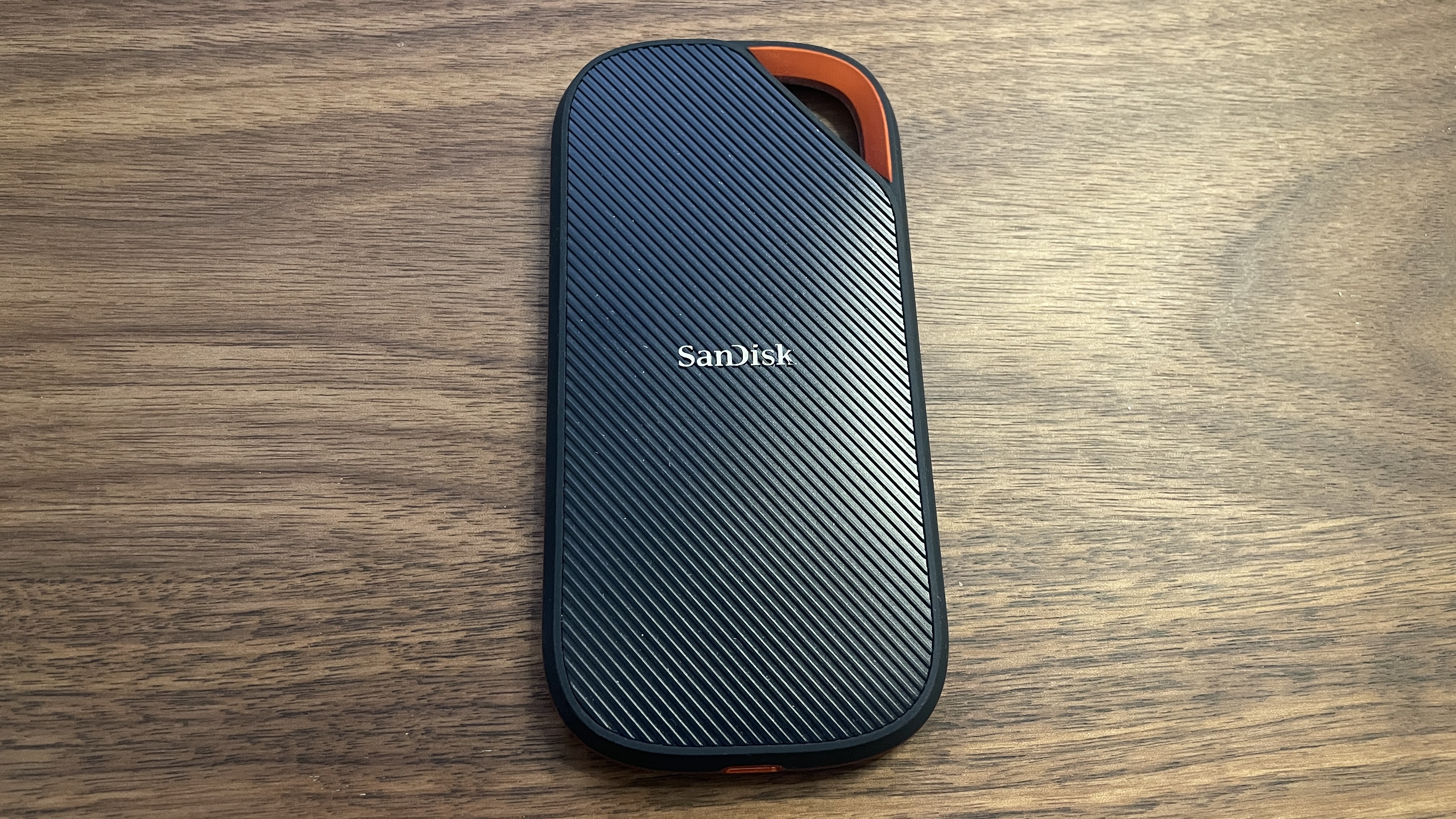

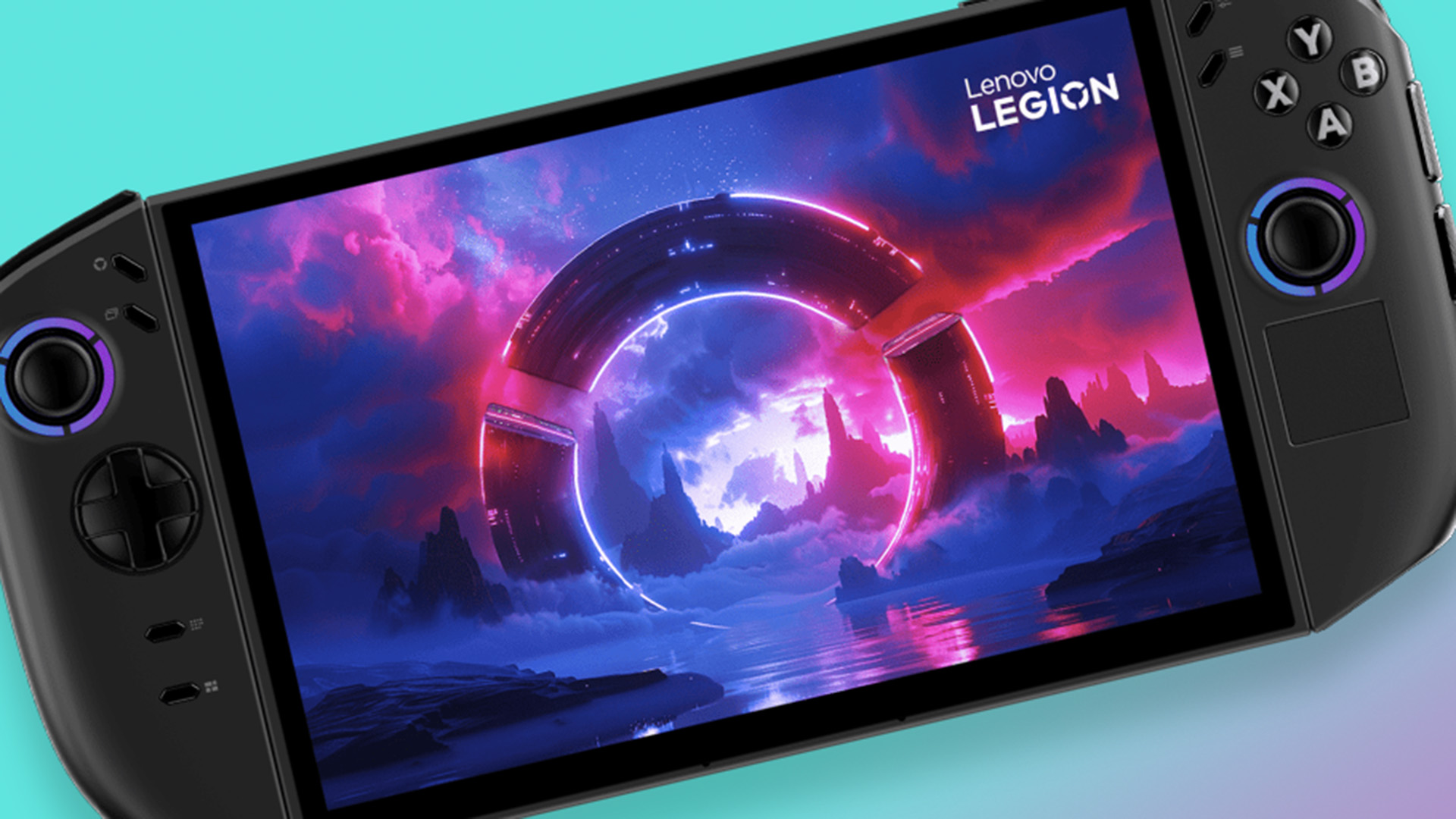

0 Comments